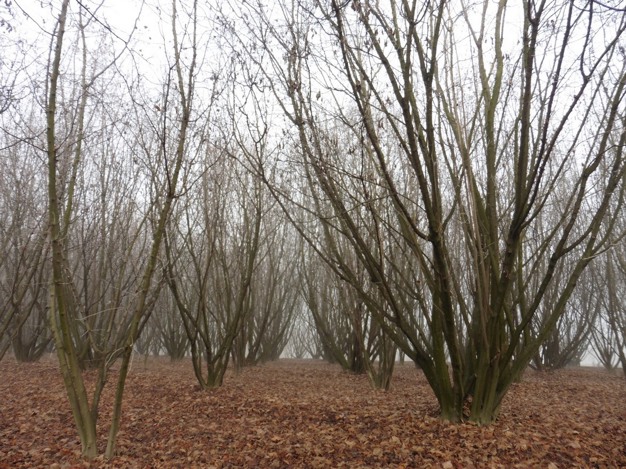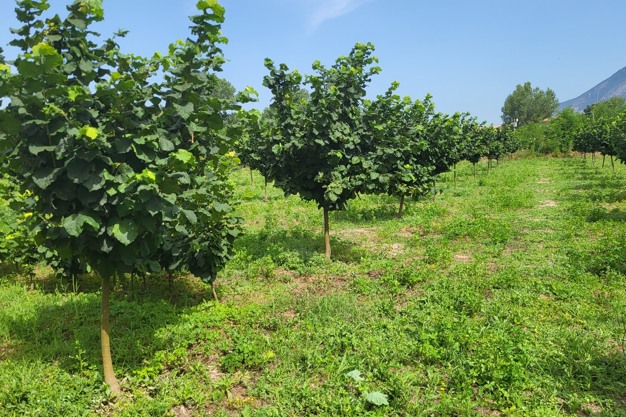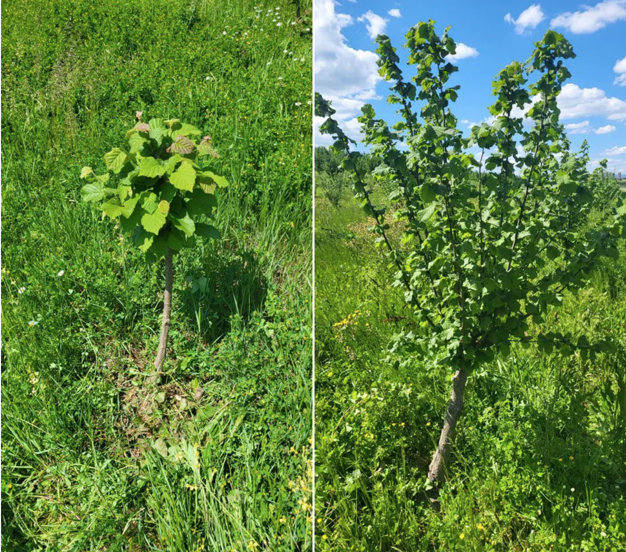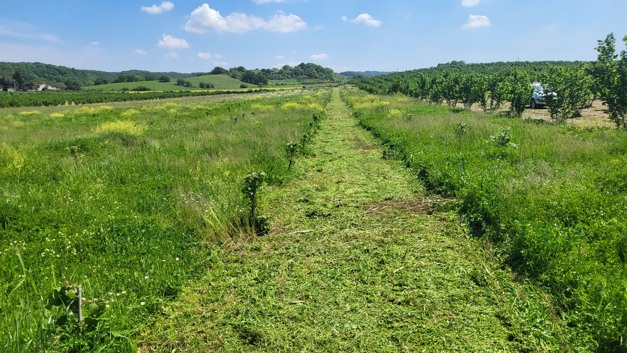New, agronomically simple and high-density cultivation techniques are emerging in hazelnut cultivation in Italy, although skepticism is still widespread because people are often hesitant to open up to innovation.
The vast majority of hazelnut plantations worldwide are managed using the multicaulis system, known as the bush system. This is a traditional form of propagation in which a stump produces several tree shoots, also known as bush system, resulting in a plant that can reach a height of up to 5 meters, with fruiting formations that are often distributed only in the apical parts, which are more exposed to light.
 Hazel grove bush system.
Hazel grove bush system.
In recent years, some growers have been bold enough to experiment and transform their plantings. Such is the case of Marcello Giangreco, an agricultural entrepreneur and owner of Tenuta Roncigliano, located just outside Rome: "When we bought the farm, there was already a 33-hectare hazelnut grove of classic Italian varieties, grown using the traditional system and in their seventh year after planting. It was a large plantation, however, and at certain times of the year it required an extraordinary amount of manpower. It took a team of 15 pruners working for 20 days just to remove the suckers that appeared periodically. I did some research to find a solution without uprooting the plants. After careful evaluation, I decided to convert the planting from multicaulis to monocaulous. The hazelnut conversion, which began in February 2023, initially involved only one plot to allow me to make a comparison with the previous system. The results in the field were already visible in July of that year, showing a plant with an excellent balance between vegetative growth activity and fruiting branches."
 Hazelnut grove with a monocaulis cultivation system.
Hazelnut grove with a monocaulis cultivation system.
He sums up: "I wanted to reduce the management costs of the cultivation by automating it, to increase the yield per hectare, to obtain a higher quality production, to optimize the use of water and nutritional resources and to have a plant with a more harmonious development."
Among the supporters of monocaulis, we find the agronomist Vito Vitelli, who explains: "The mission is to share and apply with farmers some concepts to abandon a traditional cultivation system in favor of an alternative sapling form, with a root system, a single trunk and a well-defined canopy. Thus, from a bushy structure, one obtains a potted plant, typical of fruit-bearing species. In fact, having a series of stems starting from the base is not very practical. It is a waste of woody mass that has to grow more than 2 m before it can become a fruiting system. It would be best if what has been achieved on Giangreco's farm could be reproduced by other farmers who are anchored in old, outdated schemes and underestimate the agronomic and economic benefits that can be obtained from nut trees. For new transplantations, it will be even easier, because we are starting from scratch and will reach 700-800 plants/hectare, with a planting density of 5.5m x 2.5m or 6x3m and 6-8kg/plant."

The aim is to obtain plants that are slender and easy to manage, with well-distributed fruit clusters on short trellises. This will increase production yields and, in view of the severe shortage of labor, it's easy to replace labor with machines.
 Plantation immediately after converting.
Plantation immediately after converting.
The transformation of the hazelnut bush is carried out through a pruning that allows for a single trunk, thus facilitating the harvesting and management of the stems. "First of all," continues Vitelli, "rough cuts are made on all the trunks, eliminating the shoots from the base and identifying the one to be kept, which will soon become the main axis and will be staked about 60-75 cm above the ground. For the first 2-3 years we will manage the shoots with specific products or mechanically; in the following years the shoots will gradually become less important."
For more information:
Agronomo Vito Vitelli
Tel.: +39 3392511629
Email: [email protected]
Website: vitovitelli.blogspot.com
